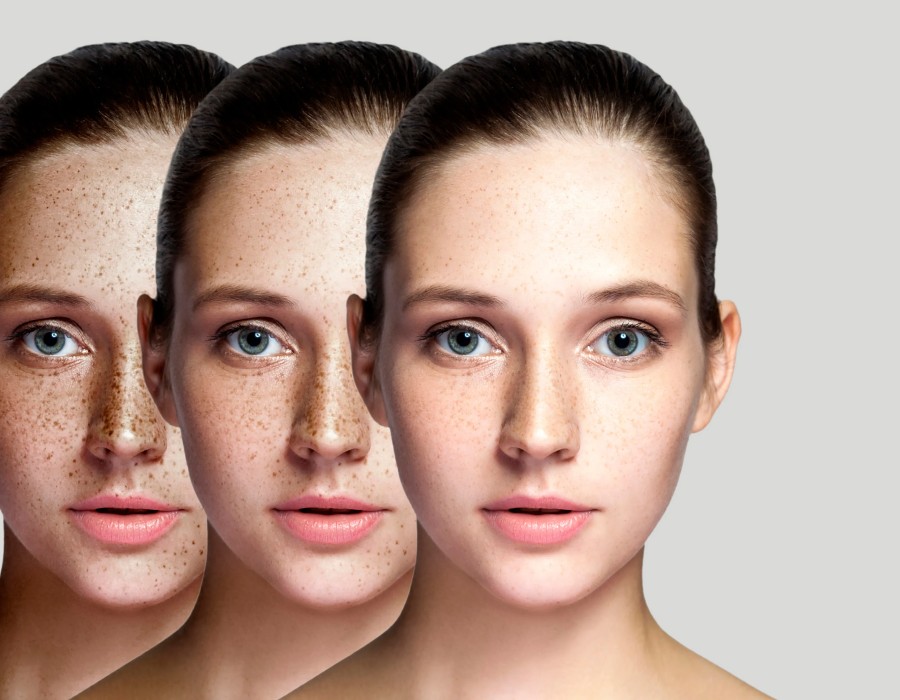Skin pigmentation issues can occur in anyone, causing obvious variations in skin color and tone. Understanding the many types of pigmentation, their causes, and possible treatments is critical to preserving healthy skin. In this detailed guide, we will look at the essential components of skin pigmentation and how to effectively treat it.
Understanding Skin Pigmentation

Skin pigmentation refers to the color of the skin, which is determined by a pigment called melanin. Melanin is produced by cells known as melanocytes. When these cells produce an excess or insufficient amount of melanin, it can lead to various pigmentation issues.
Types of Skin Pigmentation
- 1- Hyperpigmentation: This condition occurs when there is an overproduction of melanin, leading to darker patches on the skin. Common forms include:
- Sunspots: Also known as age spots or liver spots, these are caused by prolonged sun exposure.
- Melasma: Characterized by brown or gray-brown patches on the face, melasma is often triggered by hormonal changes, such as pregnancy or birth control use.
- Post-Inflammatory Hyperpigmentation: This type appears after an injury or inflammation, such as acne scars or eczema.
- 2- Hypopigmentation: This condition arises when there is a deficiency of melanin, leading to lighter patches on the skin. Types include:
- Vitiligo: A chronic condition where the skin loses its pigment in certain areas, resulting in white patches.
- Albinism: A genetic disorder characterized by a lack of melanin in the skin, hair, and eyes.
Causes of Skin Pigmentation
Several factors can contribute to changes in skin pigmentation:
- Sun Exposure: Ultraviolet (UV) rays can increase melanin production, leading to hyperpigmentation and sunspots.
- Hormonal Changes: Fluctuations in hormones, particularly estrogen and progesterone, can cause conditions like melasma.
- Genetics: Genetic predisposition plays a significant role in conditions like albinism and vitiligo.
- Inflammation: Skin injuries or inflammatory conditions can lead to post-inflammatory hyperpigmentation.
Effective Treatments for Skin Pigmentation
Addressing skin pigmentation treatments requires a targeted approach based on the type and cause of the issue. Here are some effective treatments:

- Topical Treatments: Creams and serums containing ingredients like hydroquinone, retinoids, and vitamin C can help lighten hyperpigmented areas and even out skin tone.
- Chemical Peels: These treatments use acids to exfoliate the skin, reducing pigmentation and promoting the growth of new, healthy skin.
- Laser Therapy: Laser treatments can target specific pigmentation issues, breaking down excess melanin and improving skin appearance.
- Microdermabrasion: This procedure involves gently sanding the skin to remove the outer layer, helping to reduce pigmentation and improve skin texture.
- Sun Protection: Using sunscreen daily can prevent further pigmentation issues and protect the skin from harmful UV rays.
Seek Professional Help
If you are in Warrenton or Culpeper, Virginia, and seeking personalized advice and effective treatments tailored to your skin type and condition, consult with a professional. Lifestyle's MedSpa, a premium medical aesthetics center in Virginia, offers expert guidance and cutting-edge treatments to address all your skin pigmentation concerns.
Don’t let pigmentation issues hold you back—Contact Lifestyle's MedSpa today and take the first step towards radiant, even-toned skin.





Comments